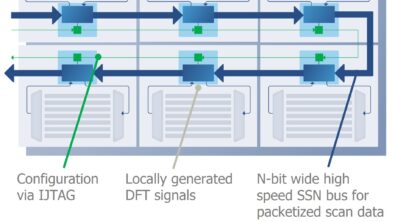An In-Depth Interview with Dr. Walden Rhines
Technical innovation, EDA market growth, the value of industry consortiums, how trends such as big data impact the semiconductor industry and how to find your work passion are among the wide range of topics covered in an IEEE Design & Test interview of Mentor Graphics chairman and CEO Wally Rhines.
Dr. Walden Rhines earned his PhD at Stanford in 1972 and then went to work for Texas Instruments. After managing consumer products for a time, he took an opportunity to lead a new DSP group at TI in a bid to catch up to new Motorola and Intel processors. A key lesson he learned from that experience, said Rhines, is that “desperation is the mother of invention.”
Rhines later left TI and joined Mentor Graphics, where he steered the company through troubled times and then focused on growth. Mentor Graphics revenue has nearly quadrupled during his tenure.
On EDA growth and economics, Rhines’ explained that EDA revenue has long been about 2% of semiconductor revenue. Growth opportunity is found in tapping into supplying the systems companies; 50% of Mentor’s revenue comes from systems companies. Rhines has pursued non-traditional EDA customers who need automation around, for example, computational fluid dynamics, thermal analysis, and wire harness design.
Regarding technology, Rhines has focused on the areas where Mentor can be number one in the industry, such as physical verification, resolution enhancement, PCB, and test. However, Rhines said that Mentor also puts a lot of effort into best-in-class point tools that will fit into any vendor’s flow.
Every node has new problems, said Rhines, and as long as the technology changes, Mentor will invest in the update and improvement of tools across the flow. Rhines noted there are critical times in the history of designing ICs that create disruptions and, ultimately, lead to innovation. One of these moments was in the late 1990s when the test cost per transistor was not going down as it should. If the trend continued, he said, it would have cost more to test a transistor than to manufacture it. Around that time, Janusz Rajski invented test compression, which let Mentor develop the industry’s first embedded test compression product. Innovation in test continues today with things like cell-aware test, which finds faults within standard cells. This capability is important for ICs with very high reliability and quality standards, like those used in automotive electronics. ISO 26262 requirements, for example, are driving other test innovations in areas such as built-in self-test that allows ICs to test themselves on start up.
Rhines said that the goal in verification is to do it faster and smarter but also to add emulation that includes verification of embedded software. Emulation in EDA is competitive and growing.
As for trends in big data, Rhines said that one area directly affecting EDA and the semiconductor industry is how to handle the analysis of test data. Mentor’s customers spend a lot of time trying to find and eliminate anything that causes yield loss. A few yield points, he said, can be worth millions of dollars. Mentor is quite active in providing statistical yield analysis to help improve yield.
Another trend is internet of things (IoT). Rhines said this is a point of discontinuity in technology and will lead to unforeseen innovations. Mentor Graphics acquired Tanner EDA, which is a great tool for IoT designs.
Another area of growing concern in electronics is security. Rhines said new products are required that help designers make ICs less hackable, protect supply chain security, and defend against embedded Trojans.
Rhines also discussed his view of R&D, fending off several takeover attempts, and then wound up the interview with some advice and predictions. For young engineers, Rhines said, “find out what it is that really makes you excited, that you really enjoy and then try to build the skill set so that when opportunities come along, you can be part of things that make a big difference.”
When asked about the EDA business in the next 5 years, Rhines said to expect growth in the systems part of EDA and in new applications, such as in enabling enormous volumes of solid-state memory.
The interview is available on IEEE Xplore here
Want more Wally? You can watch his full keynote, “Merger Mania,” presented at Mentor User2User 2016.



